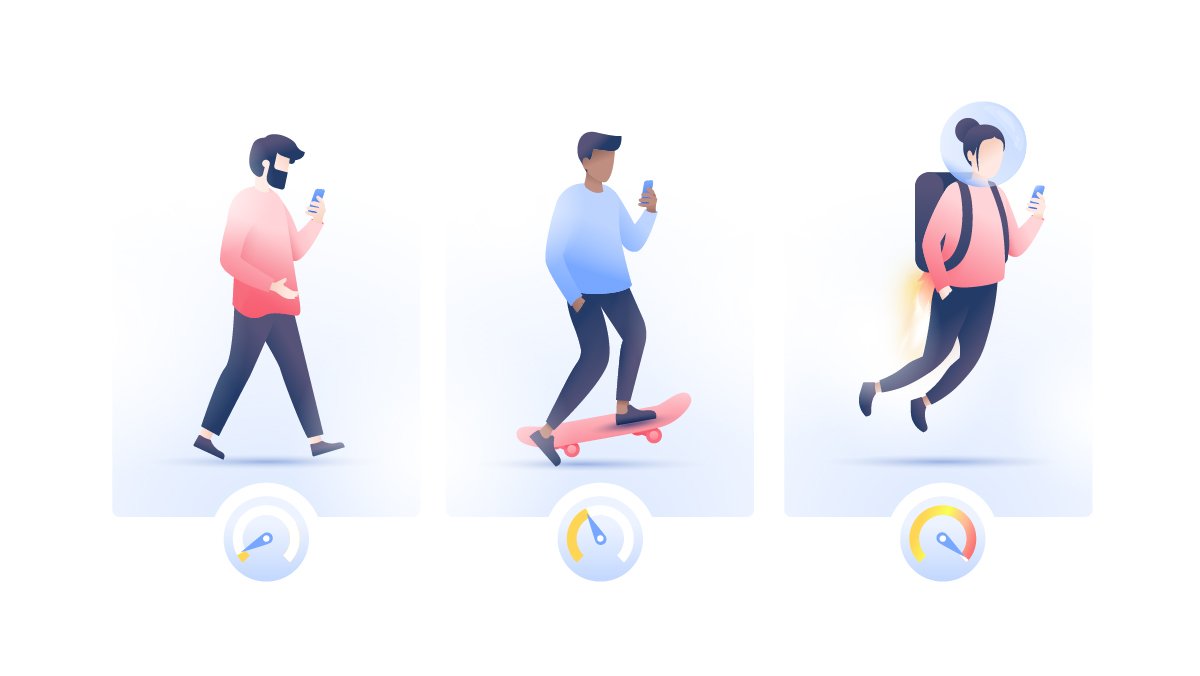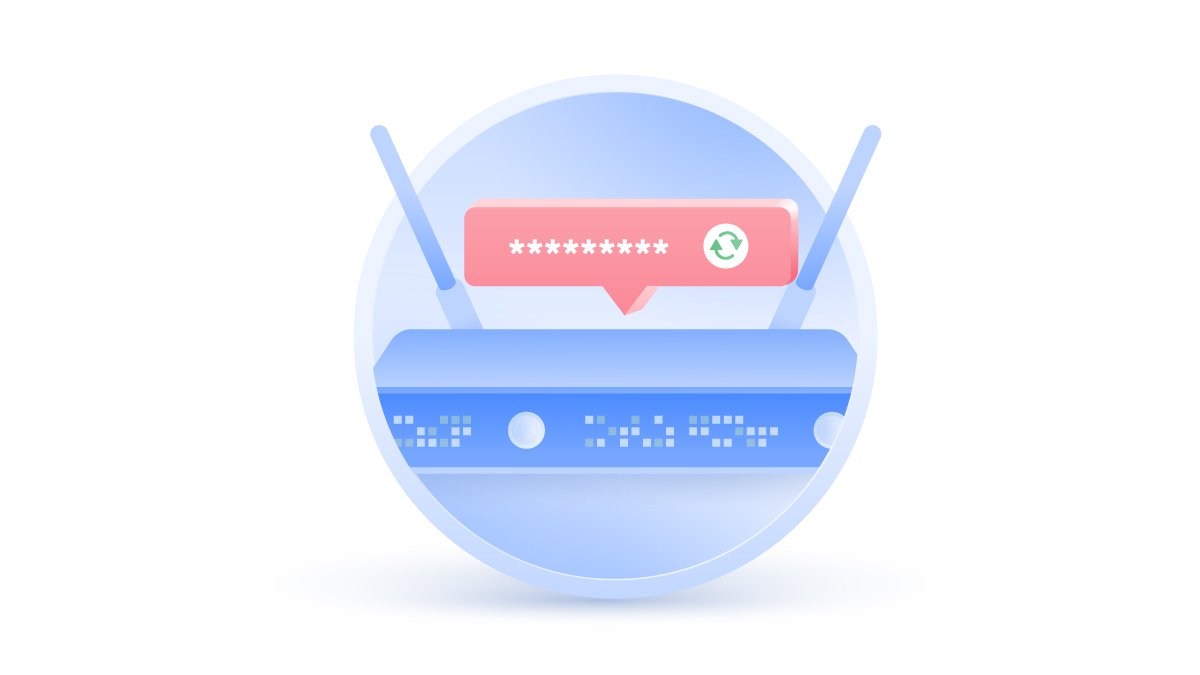How much internet speed do I need?
You just got a new broadband connection. The ad promised exceptionally high speeds, and you can't wait to stream that new blockbuster in 4K or engage in a fierce online battle with your flatmate. However, for some reason, it’s not working as it’s supposed to. Your game still lags, and movies sometimes look pixelated. You keep asking yourself: “How much internet speed do I need for everything to work properly?” Check our tips below to find out what you can do to improve your online experience.
Paul Black
Aug 05, 2020 · 5 min read

Contents
How much internet speed do I need?
The speed you need depends on your online activities and how many people will be using the network. What do you do online most often? If you do a lot of visual stuff that requires more bandwidth or have multiple internet users living in your household, you’ll probably need a faster connection. Video streaming and large downloads eat up most of the bandwidth, while online gaming requires less of it. Casual web browsing, email communication, and social media require the least speed.
But what is a good internet speed? Around 25-30 Mbps is considered a good home internet speed for most users. This is enough for basic online activities, such as web browsing, video and audio streaming, file downloading, and online gaming. Of course, if you wish to do all this on more than a couple of devices simultaneously, you’ll need a higher speed. In the table below you can see the approximate bandwidth you need for various online activities.
| The speed you need | Activities |
|---|---|
| 1-5 Mbps | Email, browsing, Google search, streaming music, standard definition video streaming on a single device |
| 5-8 Mbps | High-definition video streaming on a single device |
| 8-40 Mbps | Online gaming on a single device, video calling |
| 40-100 Mbps | Watching high-definition video on a few devices, online gaming on a few devices, downloading large files, 4K streaming |
| 100 Mbps-500 Mbps | Streaming ultra high-definition video on a few devices |
The average internet speed varies from country to country. While such countries as Taiwan or Singapore reaches up to 70-80 Mbps of average speed, most of North America's and Europe's median is 20-35 Mbps. In countries with less developed internet technologies the speed can be as low as 1-2 Mbps. So, you can see that internet penetration is still pretty uneven across the globe.
Internet bandwidth vs. internet speed
People often use the terms “internet bandwidth” and “internet speed” interchangeably, but they are not the same even though we use megabits per second (Mbps) to measure them both. Bandwidth indicates how many megabits of data can be transferred over a connection in one second. In other words, bandwidth illustrates the capabilities of your network connection, the maximum amount of data it can transfer in perfect conditions.
Internet speed measures how fast data is traveling at a given moment. It might not necessarily be the same as your bandwidth. Various factors can affect internet speed, such as:
- Type of connection. For example, you will have much higher speed with a fiber connection rather than an old-school dial-up. If you plug an internet cable into your device, your speed will likely be faster than over a Wi-Fi connection;
- The number of users. Internet speed usually slows down during peak hours (e.g., in the evenings), when many users are online;
- Outdated equipment. Old routers, wires, and other equipment can slow down your speed;
- Wrong configurations. You must always check whether your bandwidth is not limited due to configuration issues. This may include enabled firewall, filtering, wrongly configured router settings, etc.;
- Proximity from the router. In case of Wi-Fi connections, the further you are from the source, the slower the speed;
- Bandwidth throttling. Some ISPs limit users’ internet speed deliberately.
We can compare internet bandwidth and speed to cars and lanes on a highway. The bandwidth indicates how many lanes there are, while speed shows how fast the vehicles can travel. Even if the speed is lower, a large number of lanes would allow more cars to travel simultaneously. This lets a larger amount of data travel in a certain period.
Don’t forget that the Mbps indicated by your internet service provider is probably only the theoretical maximum bandwidth a connection can achieve, or its capability. This is why they typically use the “up to” phrasing in their ads. The actual speed can vary due to the circumstances mentioned above, and you don't always get the exact numbers from the advertisement. However, in this article, we will use bandwidth and speed definitions interchangeably, because this is how users use them most frequently.
See the tips in the last section of this article to make the best of your online bandwidth.
Secure yourself with a high-speed VPN that can protect you from ISP throttling.
Download speed vs. upload speed
The download speed indicates how fast information travels from a server to your device, while upload shows the reverse — how fast your data reaches a server. While download speed is usually a more important criterion, you should pay attention to the upload speed too. It is especially essential if you stream a lot, upload large files, do video-conferencing, and other things requiring higher upload speed.
Up to 25 Mbps of download speed and 3 Mbps of upload is enough for home with one or two devices. However, if you wish to stream a very high-quality video or connect more devices you need 100-150 or even higher download speed and 10 Mbps or more of upload speed.
How to calculate the bandwidth you need
To approximate your bandwidth needs, you should consider the following:
- How many users will be using your Wi-Fi network;
- What will they most likely use it for;
- Are there any obstacles that can limit your possibilities to use the full available bandwidth.
You can also multiply the number of users by the amount of Kbps. Depending on the activities, you can multiply the number by 400-500 Kbps in the case of light usage, by 800 Kbps if the usage is medium, and by 1500-2000 Kbps if it's heavy.
There are also various bandwidth calculators available online. If you decide to use one of those, make sure it’s not tied to a service provider and will give you objective results.
Internet speed for gaming
If you're a gamer, you need a faster internet. We recommend going for 15-25 Mbps bandwidth for the best experience.
You should also choose fiber-optic or cable internet to have low latency and ping rates, which is very important for gaming. Latency is the amount of time required for a signal to travel from your device to an ISP server and back. The ping rate is the measurement of latency. The higher the ping rate, the slower your game might be, as it takes more time for the data to travel.
Internet speed for streaming
When it comes to streaming, the speed depends on the quality of the content you wish to stream. Most streaming services, including Netflix, require around 3 Mbps for standard definition videos. However, for HD videos, you will need around 7-8 Mbps, while for 4K, at least 40 Mbps is recommended. Keep in mind that these numbers increase if multiple users stream videos simultaneously.
How to improve your internet speed
Consider these pieces of advice to get the best of your bandwidth:
- Disable all the bandwidth-consuming background processes and apps if you don't need them at that moment;
- Use a VPN. It will help you avoid bandwidth throttling when internet providers intentionally curb users' internet speed at certain hours or during certain activities. That way, they won't be able to see what you do and limit your connection. Also, premium VPN services do not slow down your online speed significantly. NordVPN has high speeds and easy-to-use interface;
- Regularly check your internet speed by using online measurement tools to be sure you get the bandwidth you pay for. Just make sure you choose safe websites;
- Always select a reliable service provider;
- Always make sure your internet equipment is up-to-date;
- Constantly update your internet connection software and configure it along with the hardware properly;
- Try getting closer to the router or use your internet cable;
- Use antimalware and antivirus software, as malicious apps and viruses sometimes eat up a significant amount of your bandwidth;
- Try resetting or moving your router;
- If you continuously experience speed problems, contact your provider.


